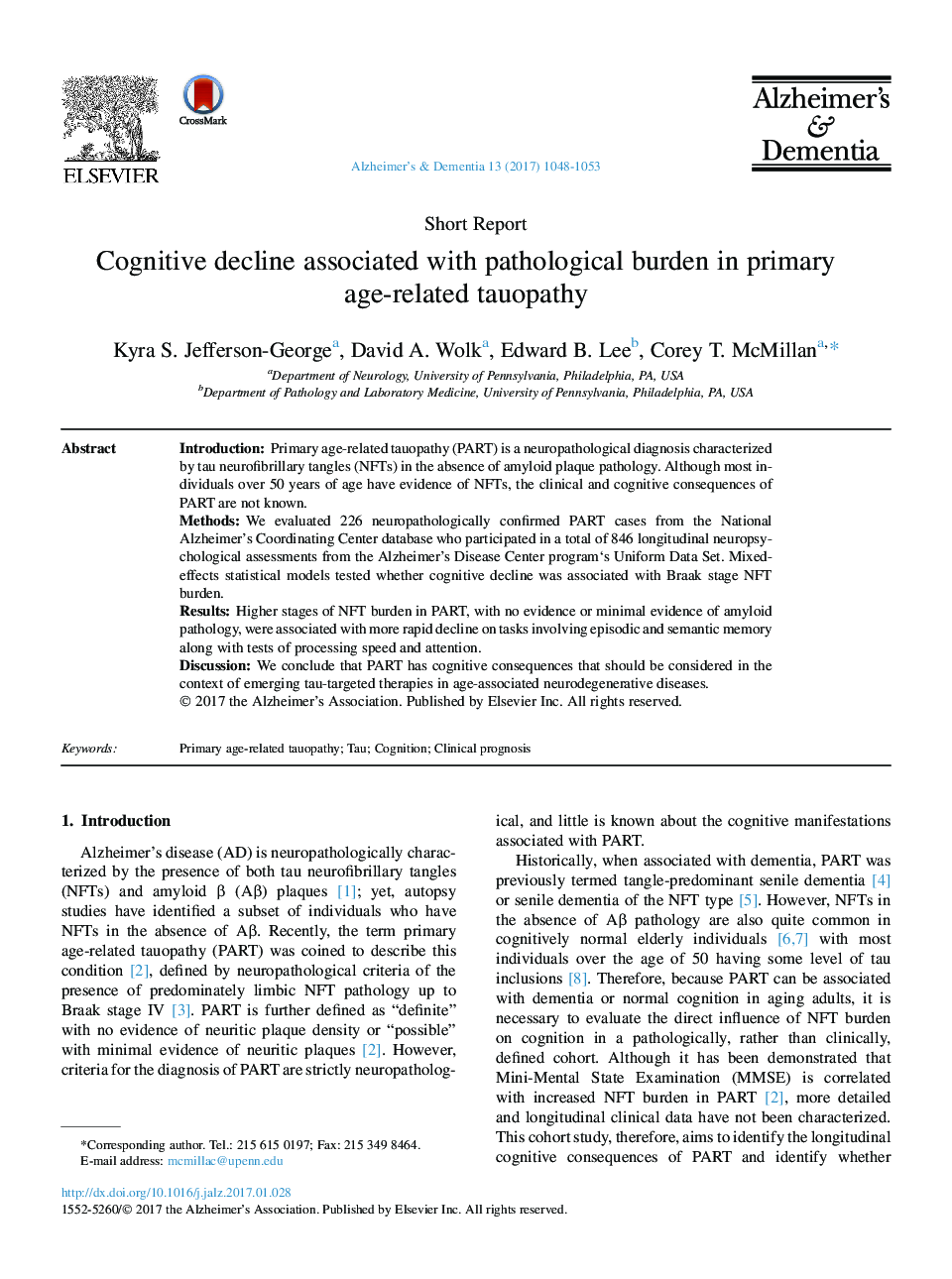| Article ID | Journal | Published Year | Pages | File Type |
|---|---|---|---|---|
| 5622797 | Alzheimer's & Dementia | 2017 | 6 Pages |
â¢The clinical consequences of primary age-related tauopathy (PART) are unknown.â¢Tau neurofibrillary tangles (NFTs) in PART increase with age.â¢Higher levels of NFTs in PART are associated with more rapid cognitive decline.
IntroductionPrimary age-related tauopathy (PART) is a neuropathological diagnosis characterized by tau neurofibrillary tangles (NFTs) in the absence of amyloid plaque pathology. Although most individuals over 50Â years of age have evidence of NFTs, the clinical and cognitive consequences of PART are not known.MethodsWe evaluated 226 neuropathologically confirmed PART cases from the National Alzheimer's Coordinating Center database who participated in a total of 846 longitudinal neuropsychological assessments from the Alzheimer's Disease Center program's Uniform Data Set. Mixed-effects statistical models tested whether cognitive decline was associated with Braak stage NFT burden.ResultsHigher stages of NFT burden in PART, with no evidence or minimal evidence of amyloid pathology, were associated with more rapid decline on tasks involving episodic and semantic memory along with tests of processing speed and attention.DiscussionWe conclude that PART has cognitive consequences that should be considered in the context of emerging tau-targeted therapies in age-associated neurodegenerative diseases.
